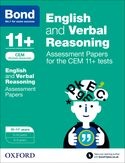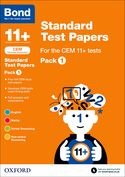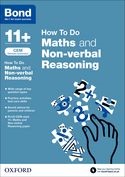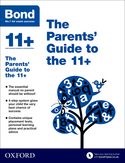What is the CEM 11+ exam?
Originally created by Durham University, the CEM 11+ exam has become more popular with grammar schools who fear that the existing 11+ exam system had become too transparent. The CEM exam has been designed to address concerns over question spotting and ‘teaching to the test’.
To tackle these issues the CEM 11+ differs from the GL 11+ exam, with a very different exam format and a perceived increase in the level of difficulty.
For more detailed information about the CEM 11+ exam, read our blog ‘11+ exam boards: CEM vs GL – what’s the difference?’.
How long does it take to study for CEM?
GL and CEM are the two main exam boards for the 11+ and although they cover broadly the same topics – English, maths, verbal and non-verbal reasoning/spatial awareness – there are very real differences to the way the GL and CEM 11+ exams work, which will have an impact on how you support your child.
To help you prepare your child for the 11+ exam, we’ve summarised the key differences between GL and CEM.
Which subjects are covered?
- GL: English, maths, verbal reasoning, and non-verbal reasoning/spatial awareness (schools can choose any combination of these to best suit their selection policy).
- CEM: verbal reasoning, non-verbal reasoning, and numerical reasoning (‘verbal reasoning’ encompasses many of the skills tested in the GL English exam, including comprehension and ‘numerical reasoning’ involves the core maths skills needed for the GL exam).
Which skills will be tested?
Your child will require strong skills in the following areas:
- GL: vocabulary, logic, maths, and spelling
- CEM: English, comprehension, vocabulary, spelling, and maths. CEM verbal reasoning is very different to GL and success is dependent on children having a wide-ranging vocabulary.
Why is CEM different?
The CEM 11+ exam is favoured by some regions and schools as it is seen as more ‘tutor-proof’ than GL. CEM places more emphasis on:
- not producing or endorsing any published practice papers
- basing the test papers more closely on the National Curriculum, which is followed by all state school children
- a perceived increase in difficulty
- it is an online-only test
If your child is sitting a GL Assessment-examined test, use plenty of past and practice papers to familiarise your child with the question types in each subject.
If your child is sitting a CEM-examined test, work hard on developing a deep and rich vocabulary:
- Use a vocabulary book to record new words and their meanings to ensure that your child really understands the new words they are learning and can use them in context.
- Read widely with your child and use ‘grown up’ words in ordinary conversation, explaining their meaning as you go.
- Practise synonyms and antonyms, for example, encourage your child to use more sophisticated words to describe something, or complete crosswords together.
- Plenty of exam prep using practice papers is also important for CEM, but the question types that appear in the real CEM 11+ exam are much more unpredictable.
For both tests, but especially the CEM-examined tests, time management skills are of great importance:
- Make sure your child does plenty of timed practice and is accustomed to managing their time carefully.
- Use practice test papers to set mock tests under exam conditions to help them get used to formal exam conditions – getting used to working in test conditions will help your child feel less intimidated by the real exam.
What is a good score on the CEM test?
The 11+ exam is highly regionalised: the subjects covered in the 11+ papers and how your child will be tested will depend on where you live.
There are two main exam boards for the 11+ exam:
- GL Assessment – previously known as NFER, GL Assessment develop and administer 11+ exams in the majority of grammar schools in the UK.
- CEM – developed by the Centre for Evaluation & Monitoring at Durham University, the CEM 11+ exam was created in response to fears from some grammar schools that the existing 11+ exam system had become too predictable. The CEM exam was designed to address concerns over question spotting and ‘teaching to the test’. As of 2022, the CEM test is now exclusively taken online.
For example, the Kent grammar schools use a variation of the GL exam known as the Kent Test. This is made up of a multiple-choice paper of English and maths questions, a paper of verbal reasoning and non-verbal reasoning/spatial awareness, and a 40-minute writing test. This last exam is only marked when looking at borderline candidates or appeals. Some schools in Kent have additional tests which can either be taken in place of the Kent Test or as a supplement to it.
There can be significant differences between the exams depending on where your child is taking the 11+. This makes it extremely important to check with your Local Authority and local grammar schools so that you know exactly what subjects and skills your child will be tested on as part of their 11+ exam. Some schools are part of consortiums, and their application system may differ from that outlined by the Local Authority. Therefore, it is important to check with the schools directly. Additionally, schools don’t necessarily use all the papers provided by an exam board: they may choose to just test on a couple of topics as opposed to all four.
Checklist – to find out how the 11+ exam is structured in your area, check the following details with your chosen school:
- When is the 11+ exam?
- Which subjects are tested?
- How many questions will there be in the 11+ paper?
- What format does the exam take?
- Who provides the exam?
Currently the GL and CEM exams are taken in the following regions:
GL ASSESSMENT: Barnet, Birmingham, Bournemouth, Christchurch and Poole, Buckinghamshire, Calderdale, Enfield, Gloucestershire, Lincolnshire, Medway, North Yorkshire, Plymouth, Slough, Warwickshire, Wiltshire.
CEM: Bexley, Devon, Kirklees, Redbridge, Telford and Wrekin, Walsall, Wolverhampton.
GL ASSESSMENT AND CEM: Lancashire, Torbay, Trafford.
GL AND SCHOOL'S OWN TEST: Bromley, Reading, Wirral, Kent.
SCHOOL'S OWN TEST: Cumbria, Essex, Kingston upon Thames, Liverpool, Southend-on-Sea, Stoke-on-Trent, Sutton.
N.B. Please note, this information was correct at time of publication, but schools do change exam board so it is essential that you check with each school to which you are applying.
Are CEM tests hard?
Practice is the best way to develop skills and improve scores – the key is to start at a manageable level and build up from there. Whilst a challenge can be invigorating, attempting questions that are too hard for your child can have a negative impact on their results and their confidence. If in doubt, start with materials that you know they are comfortable with and then gradually increase the difficulty.
All Bond books include guidance on how to get the best results and on which books to try next, depending on the scores your child is achieving. For ages 9-10 and 10-11+, Bond assessment practice also includes Up to Speed titles for children needing additional support to get up to the level required for exam success and Challenge papers for those who are working at the required level but are looking for an extra challenge or those who are applying for the most competitive schools.
With a subscription to one of our online products, parents and guardians get access to detailed reports showing how their child has been performing across topics, allowing them to pinpoint areas for improvement.
Bond Handbooks are packed with essential explanations and guidance, as well as ideas on how to improve scores and tutor exam tips.
Each pack of Bond 11+ Test Papers also includes ‘The secrets of 11+ success’ booklet.
The Free Resources section of this website also includes the Bond Placement Tests which will help you to establish your child’s strengths and weaknesses across the core subject areas. The Free Resources section also features activities, further guidance, additional practice material, and walkthrough videos.
How Bond can help you prepare for the CEM 11+ exam:
Our range of CEM online test practice materials and exam papers are designed to help support you throughout your 11+ journey, from taking your first steps into assessing your child’s abilities, all the way through to conducting realistic mock exams at home. All aspects of the 11+ are here, including maths, non-verbal reasoning, English and verbal reasoning.
11+ exam practice: Assessment and standard test papers
Bond CEM Assessment Papers – assess and target

- Carefully graded practice papers to assess your child's strengths and weaknesses.
- Provides the widest range of question types for 11+ English and Verbal Reasoning practice in a realistic exam style.
- Practical tips from expert authors and a 'next steps' planner help improve exam skills. Buy now
Bond CEM Test Papers – develop key exam skills

- Mock test papers simulate the 11+ exam, enabling children to develop the key exam skills of: following instructions, reading the question carefully and time management.
- Covers all question types your children will experience in the real exam.
- Clear explanations for each answer help improve exam skills.
- Tips for exam success, written by leading 11+ tutors and packed with advice to help gain extra marks. Buy now
To find out more, download our free sample CEM practice test.
Supportive learning resources: How to do… guides and the Parents’ Guide
Bond How to do… guides – learn and understand

- Packed with worked examples for each question type so that you can understand how questions should be answered.
- Effective step-by-step strategies and techniques for tackling each type of 11+ Maths and Non-verbal Reasoning questions.
- Practical activities you can do with your child to improve understanding. Buy now
Bond Parents’ Guide – understand the 11+

- The essential manual for all parents whose children are about to embark on their 11+ journey with a new section on the CEM exam.
- Contains unique placement tests, personal learning plans and practical advice
- Written by an experienced 11+ tutor, it offers a practical 4-step approach to guide you through the entire process. Buy now
Engaging Online Revision: Bond Online
Used by thousands of parents and children every year, Bond Online is a fun and engaging way of helping your child prepare for the 11+:
- Unlimited access to thousands of 11+ practice questions.
- CEM-specific tests that will help your child prepare for their actual exams.
- Instant marking and feedback for children and parents.
- Progress reports on each subject and topic. Buy now